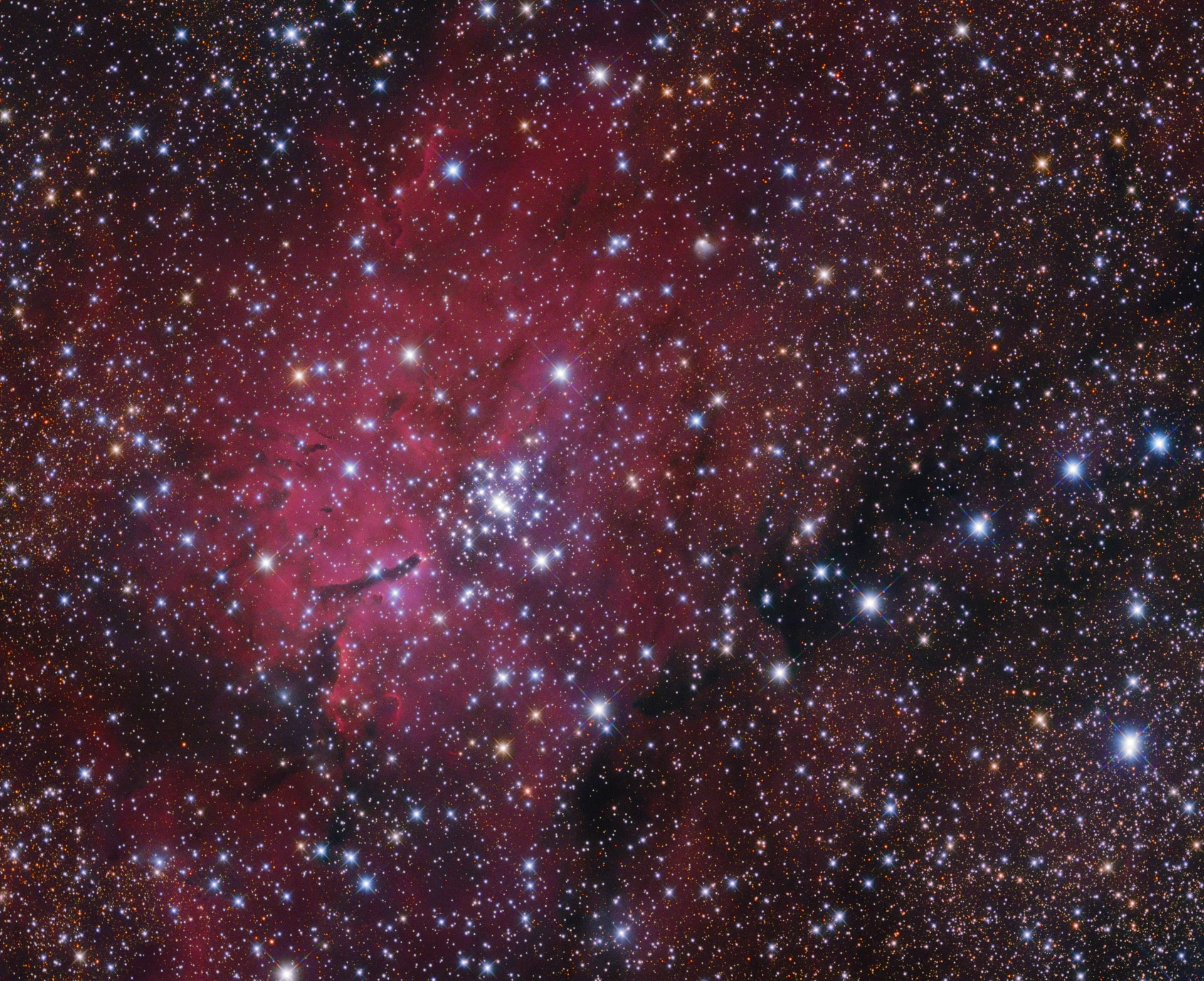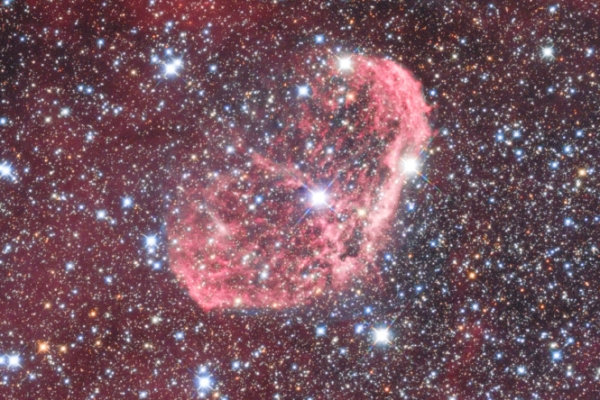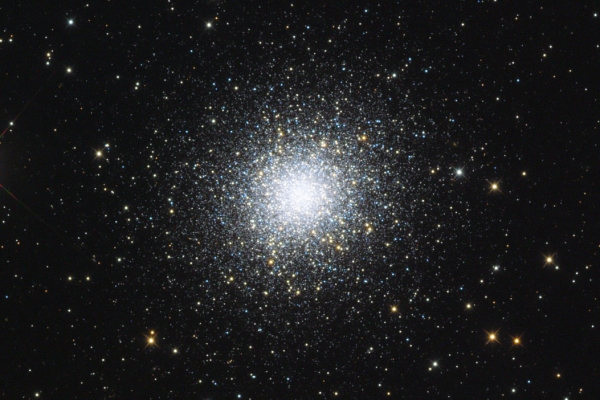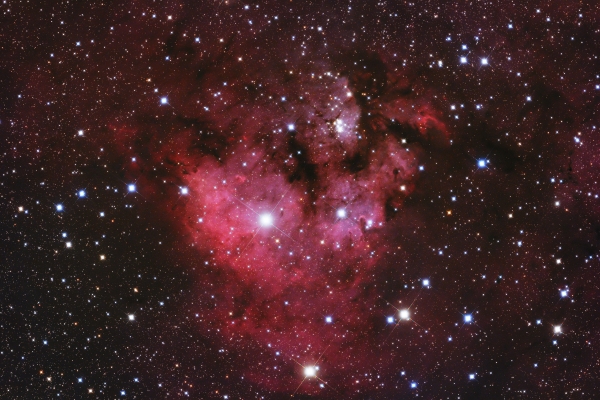NGC6820 emission nebula and the sparkling NGC6823 open cluster

Technical data
| Instrument: | 173/700 Newton-astrograph (ZsIO), SkyWatcher comacorrector F/4 |
| Camera: | Atik One 6.0 |
| Filter: | Baader 1,25" CCD filter set, LRGB-Ha |
| Mount: | SkyWatcher NEQ6 Pro Synscan (modified) |
| Guiding: | Lacerta M-Gen autoguider, OAG |
Image data
| Exposure time: | Sum. ~13 hours, L: 25*10 mins, R: 5*10 mins, G: 11*10 mins, B: 8*10 mins, Ha: 27*10 mins |
| Location, date: | Hungary, Izsákfa, Mount-Mátra, Ágasvár, 2015. July |
| Transparency: | 6/10 |
| Temperature: | 21 °C |
| FWHM: | 2.75" |
| Processing: | CCDStack, Registar, Pixinsight LE, Photoshop |
Description
Star cluster NGC 6823 is slowly turning gas clouds into stars. The center of the open cluster, visible on the upper right, formed only about two million years ago and is dominated in brightness by a host of bright young blue stars. Some outer parts of the cluster, visible in the featured image's center as the stars and pillars of emission nebula NGC 6820, contain even younger stars. The huge pillars of gas and dust likely get their elongated shape by erosion from hot radiation emitted from the brightest cluster stars. Striking dark globules of gas and dust are also visible across the upper left of the featured image. Open star cluster NGC 6823 spans about 50 light years and lies about 6000 light years away toward the constellation of the Fox (Vulpecula). Text source: apod.nasa.gov
Technical data
| Instrument: | 173/700 Newton-astrograph (ZsIO), SkyWatcher comacorrector F/4 |
| Camera: | Atik One 6.0 |
| Filter: | Baader 1,25" CCD filter set, LRGB-Ha |
| Mount: | SkyWatcher NEQ6 Pro Synscan (modified) |
| Guiding: | Lacerta M-Gen autoguider, OAG |
Image data
| Exposure time: | Sum. ~13 hours, L: 25*10 mins, R: 5*10 mins, G: 11*10 mins, B: 8*10 mins, Ha: 27*10 mins |
| Location, date: | Hungary, Izsákfa, Mount-Mátra, Ágasvár, 2015. July |
| Transparency: | 6/10 |
| Temperature: | 21 °C |
| FWHM: | 2.75" |
| Processing: | CCDStack, Registar, Pixinsight LE, Photoshop |
Recommended photos

The Crescent Nebula
NGC 6888, also known as the Crescent Nebula, is a cosmic bubble about 25 light-years across, blown by winds from its central, bright, massive star.

The Great Globular Cluster
The Great Globular Cluster is brighty shinning deep sky object in constellation Hercules.

The Devil's Head Nebula
Towering pillars of cold gas and dark dust adorn the center star forming region of Sharpless 171.


